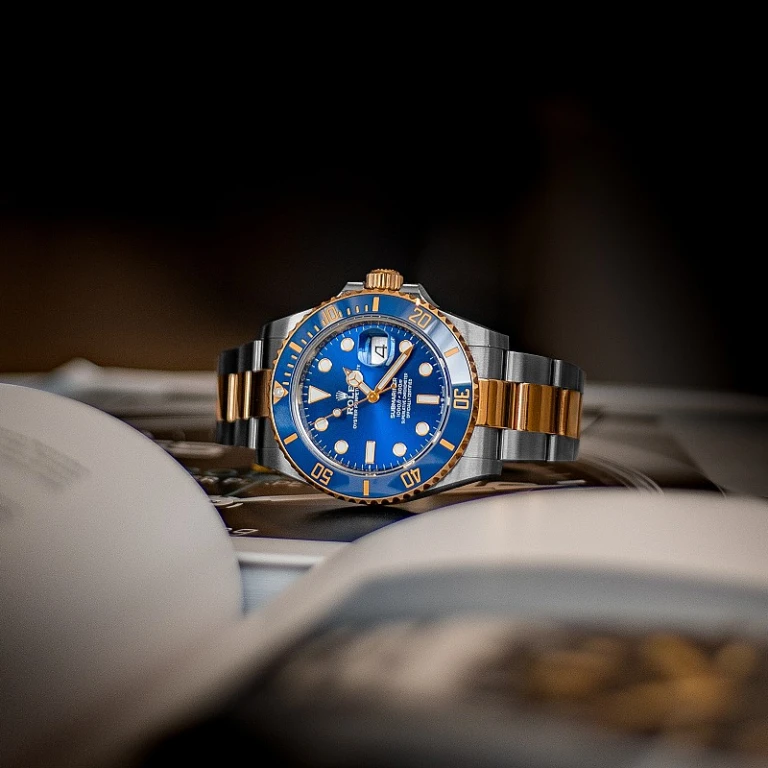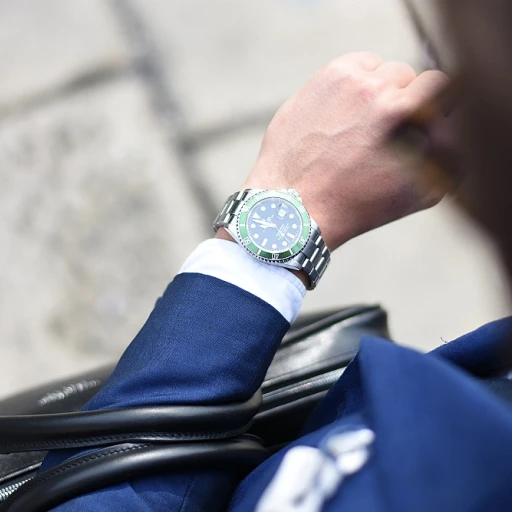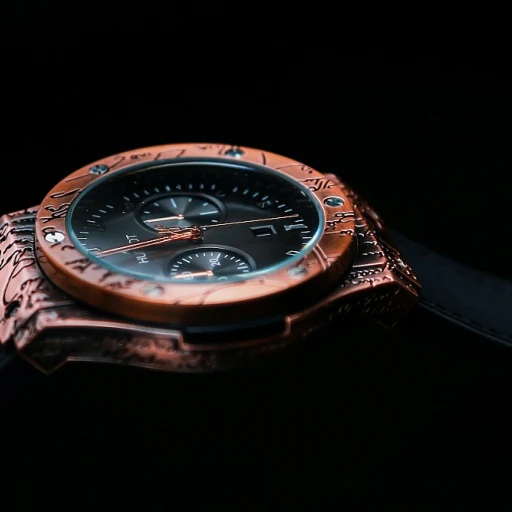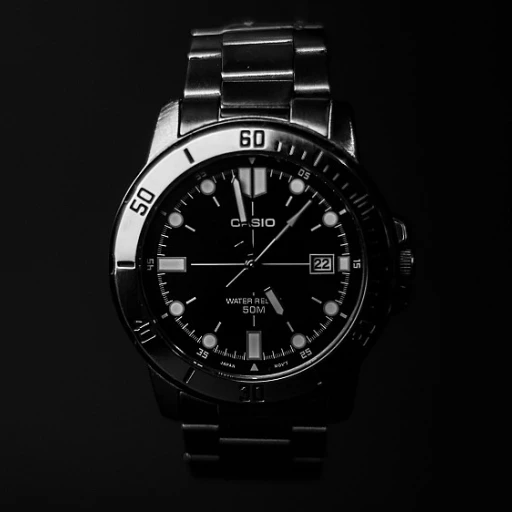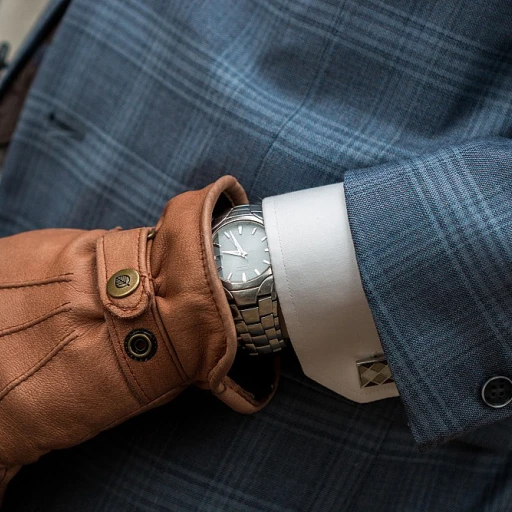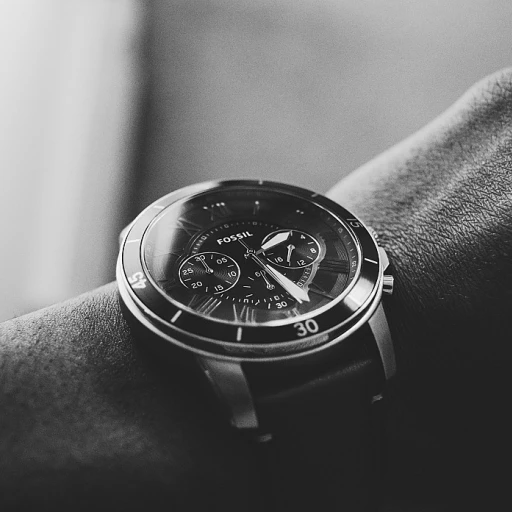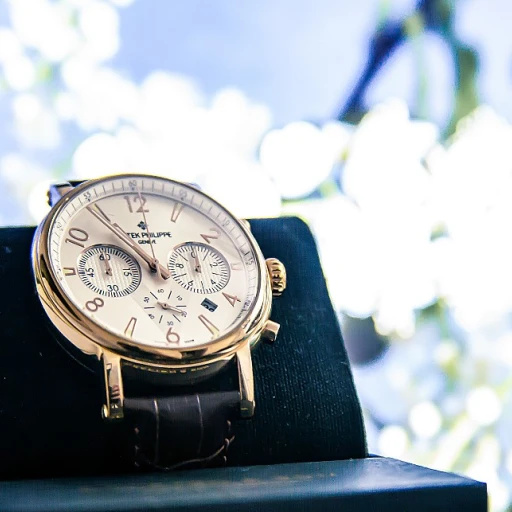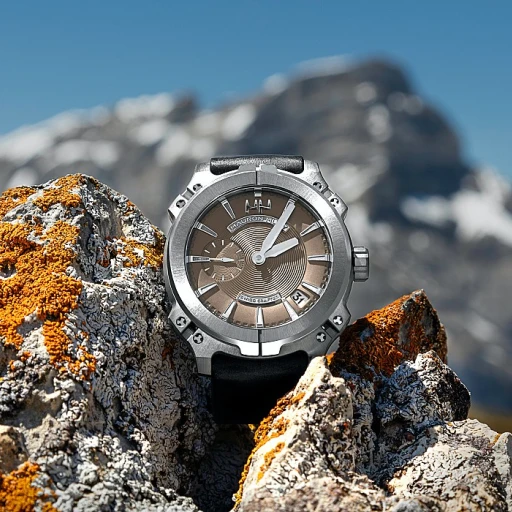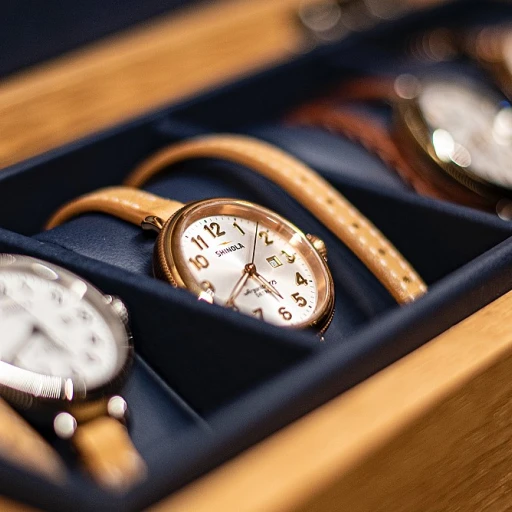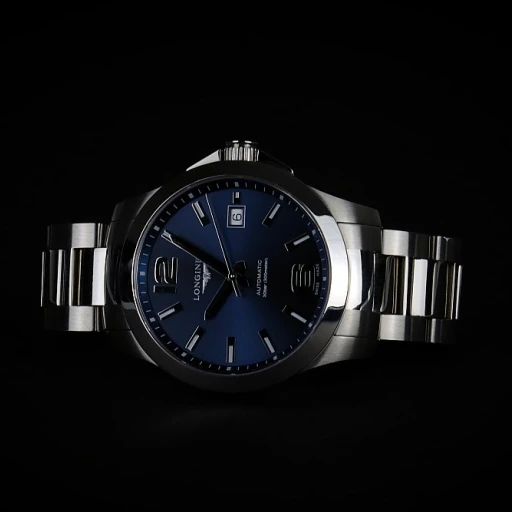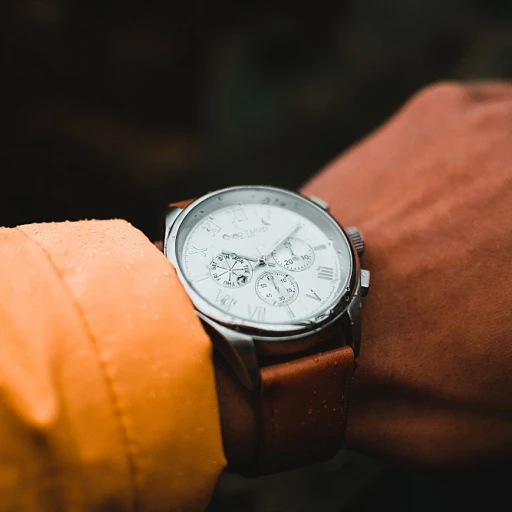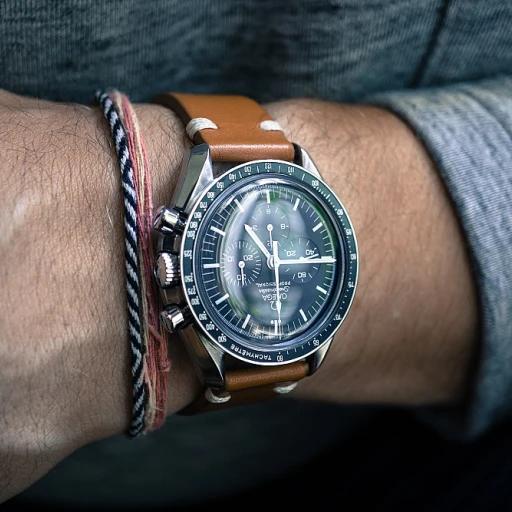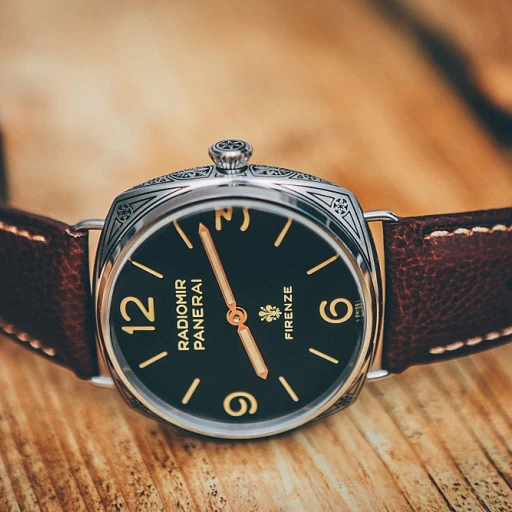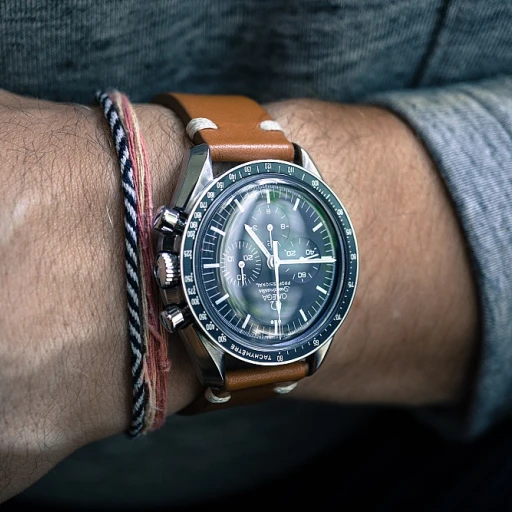
Defining Precision: The Art of Chronometer Certification
Understanding the Intricacies of Chronometer Certification
Embarking upon the journey of comprehending luxury precision begins with a fundamental grasp of chronometer certification. This esteemed label isn’t simply handed out; it's a testament to exceptional accuracy and superior craftsmanship. Chronometers, in their refined glory, must pass the stringent tests set by official bodies like the Contrôle Officiel Suisse des Chronomètres (COSC). These intense evaluations span across several days, ensuring that each piece consistently operates within an incredibly tight margin of -4/+6 seconds per day.According to COSC, less than 3% of Swiss watches earn this coveted title annually, clearly delineating the realm of precision that defines chronometer-certified timepieces.
The Essence of Watchmaking Excellence
Delving deeper, the art of chronometer certification reflects an obsession with accuracy that dates back centuries. Watch enthusiasts and experts often cite the tick-tock of a certified chronometer as the heartbeat of mechanical prowess. As reported in industry analyses, brands like Rolex, Omega, and Breitling dominate the conversation around precision, each striving to exceed the others with innovations that push mechanical boundaries.It's a symphony of gears and springs orchestrated to perform flawlessly under the scrutiny of both time and envious rivals.
Gauging the True Value of Timekeeping
The question beckons – do the technical merits translate into tangible benefits for the watch aficionado? Those enamored with horological marvels appreciate that a certified chronometer is not just a tracker of hours; it's a guardian of moments. Owners of such distinguished timepieces often speak of the intangible allure that accompanies their wristwear. With the precision-driven demand for luxury timekeepers steadily climbing, the prestige encapsulated in owning a chronometer-certified watch increasingly signifies an intimate connection with the zenith of timekeeping.
The Pursuit of Perfection in a Mechanized Form
Chronometer certification isn't merely a label; it's the culmination of relentless pursuit, a narrative woven into the fabric of each watch’s story. This dedication to precision has nurtured an industry where heritage blends with futuristic innovation. As we navigate through the motley of luxury watch options, the chronometer-certified models stand out as beacons of human ingenuity. For those who invest in these mechanical masterpieces, the assurance of accuracy is akin to the reliability of a trusted friend.
In following sections, we will examine specific models that exemplify the apex of certified precision, delve into the value proposition of these exceptional timekeepers, and explore how innovation keeps redefining the very standards they were meant to uphold. The essence of luxury timekeeping is not just in the name—it's etched in every minute detail that contributes to the definition of a chronometer-certified luxury watch.
The Elite Timekeepers: Comparing Popular Chronometer-Certified Models
Popular Models in the Spotlight
Diving into the world of certified chronometers reveals a constellation of luxury timepieces vying for the top spot in precision. Among the high-end brands that dominate this exclusive market, Rolex, Omega, and Breitling stand out with their certified models that have left indelible marks on the industry. Rolex's Oyster Perpetual series, for instance, has set the bar for chronometric performance, while Omega's Seamaster collection brings with it a legacy of sea exploration paired with unwavering accuracy. Not to be outdone, Breitling’s Navitimer, embraced by aviation professionals, demonstrates that functionality can coexist with luxury. Each model is a testament to the brand's commitment to excellence, crafting timepieces that are not only certified by the COSC but also embody the pinnacle of design and functionality.
Unveiling the Features of Leading Chronometers
- Rolex Submariner: Known for deep-sea durability and an iconic aesthetic, it boasts a self-winding caliber 3135 movement with a 48-hour power reserve and superlative precision.
- Omega Speedmaster Professional: With a storied history including the moon landing, this chronograph features a manual-winding Omega 1861 caliber, both robust and reliable in extreme conditions.
- Breitling Chronomat: Offering an automatic B01 caliber movement, this watch represents an intersection of style and technical sophistication, with a 70-hour power reserve, setting the standard for luxury chronometers.
Each model showcases not just unmatched precision but also technological prowess. Statistics from the Federation of the Swiss Watch Industry show that timepieces with chronometer certification are consistently among the most in-demand categories in the luxury watch market, highlighting the importance consumers place on certified precision.
Crafting Excellence: Hand-Assembled Movement and Rigorous Testing
The allure of a chronometer-certified watch lies not only in its precision but also in its craftsmanship. The societal prestige associated with these timepieces is a result of the intensive labor and intricate assembly of each movement. The certification process itself—often involving multiple rounds of meticulous testing under various conditions—further elevates these watches to a status of horological superiority. According to the COSC, less than 3% of Swiss watches receive chronometer certification, delineating an exclusive club of timekeepers that are a blend of tradition and technological progress.
Perpetual Precision: A Comparison in Numbers
When juxtaposing chronometer-certified models, aficionados often direct their gaze towards the daily rate variance. Rolex chronometers, for example, claim an impressive maximum deviation of just -2/+2 seconds per day. In comparison, Omega specifies their chronometers to a standard of -0/+5 seconds per day, promising steadfast reliability. On the other hand, Breitling distinguishes itself with its 1/4th second chronograph function, offering a level of detail that satisfies even the most meticulous of collectors. For the passionate enthusiast, these statistics are not mere numbers but historical benchmarks of human engineering and luxury.
Chronometer Vs. Standard Movements: Is the Precision Worth the Premium?
The Distinction That Drives the Market
When selecting a luxury watch, discerning buyers often ponder whether the extra expense for a chronometer-certified model equates to a tangible improvement in timekeeping. According to statistics from the esteemed Contrôle Officiel Suisse des Chronomètres (COSC), less than 3% of Swiss watches receive the prestigious certification annually. This rarity underscores not only the exclusivity but also the high precision standards that these timepieces meet. Consumers are essentially paying a premium for a timekeeping performance that outpaces that of standard movements, a subtle yet profound badge of excellence.
Examining the Value Proposition
Stating 'precision is priceless' may seem overzealous, yet the market reflects that sentiment. Consider the resale trends for chronometer-certified watches—for example, the Rolex Submariner or the Omega Seamaster. These models often retain or even increase in value over time, indicative of their worth. It’s a statistic that speaks volumes to collectors and investors alike, where the word 'chronometer' implies not just accuracy, but a stable investment. Conversely, standard watches may depreciate quicker and fail to inspire the same confidence among luxury watch enthusiasts.
In Pursuit of Mechanical Excellence
Quote industry experts like Thierry Stern, President of Patek Philippe, and they’ll affirm the pursuit of excellence through chronometer certification is more than a marketing ploy: it's a testament to a brand's dedication to precision and quality. 'The pursuit of creating the perfect chronometer is the heart of fine watchmaking,' says Stern. This pursuit leads to continuous innovation, striving to beat the already stringent criteria set by COSC, further driving advancements in the horological field. Such relentless innovation justifies the premium price, harmonizing with the luxury watch buyer's passion for mechanical sophistication.
Performance Metrics in Daily Life
- A chronometer-certified watch promises a maximum deviation of -4/+6 seconds per day, as mandated by COSC.
- Standard mechanical movements, while still accurate, may experience variances up to 15 seconds per day or more.
- For professionals and enthusiasts whose daily life reveres punctuality, this difference is not just measurable but critical.
Every second counts in the eyes of a true horology aficionado. The premium paid for a chronometer-certified timepiece, therefore, is not just for the watch itself; it’s for the assurance that every moment is accounted for with superior precision.
Luxury Calibration: More Than Just Numbers
While the numbers are compelling, the essence of choosing a chronometer-certified watch transcends mere statistics. It's about the emotional connection that comes with owning a piece of horological artistry. The ability to appreciate the rigorous testing and fine-tuning that each piece undergoes is part of the allure. For luxury watch lovers, the premium is a gateway to an exclusive club of precision and a testament to the craftsman's dedication to their art form, making it a worthwhile investment beyond the bounds of quantifiable precision.
The Quest for Accuracy: Innovations Fueled by Chronometer Standards
Innovation Driven by the Pursuit of Ultimate Accuracy
Chronometer-certified watches symbolize a relentless pursuit of precision, a trait highly sought after by luxury watch enthusiasts and collectors alike. This exceptional standard of accuracy drives watchmakers to innovate constantly. For instance, Rolex's Perpetual movements and Omega’s Co-Axial escapements are renowned innovations aimed at reducing friction, diminishing wear and tear, and enhancing the long-term reliability of their movements. Rolex, with a staggering estimate of over 800,000 chronometer certificates awarded to its watches each year, exemplifies the marriage between precision and innovation.
Revolutionizing Power Reserves in High-Precision Timekeepers
One of the fundamental aspects that chronometer standards have revolutionized is power reserve in luxury timepieces. A long power reserve ensures that a watch maintains its accuracy even when not worn. Notable examples include the Patek Philippe Caliber 31-260 REG QA, which boasts an innovation in energy efficiency, thereby extending its power reserve significantly. Statistics show the trend towards longer power reserves is an attractive feature for 65% of potential luxury watch buyers.
High-tech Materials Making Waves in Chronometer Craftsmanship
Advancements in material science have also had a profound impact on the world of chronometer-certified watches. High-tech materials such as silicon in balance springs and Titanium cases are not just a style statement but also enhance the performance and durability of a luxury watch. Ulysse Nardin, a pioneer in using silicon, underscored the material's properties for improving long-term accuracy and resistance to magnetic fields. These developments are a testament to the commitment to precision that chronometer standards demand.
The Demand for Ultra-Precise Chronometers Influencing Watch Engineering
As the appetite for ultra-precise timepieces grows, horological engineers are compelled to push the boundaries further. TAG Heuer's Mikrogirder system, which vibrates at a dizzying 7.2 million times per hour, radically departs from traditional balance wheel constructions and exemplifies the innovative spirit catalyzed by the pursuit of the chronometer label. Though these technologies are in their nascent stages, they highlight the influence of chronometer precision on the evolution of watch mechanics.
Mechanical Marvels: Sustainable Innovations Shaping the Future of Chronometers
Finally, sustainability in watchmaking is also a significant concern, with an eye on preserving both the timepiece and the environment. Chronometer-certified models are increasingly featuring components that are crafted to last, reducing the need for frequent replacements or servicing. This sustainability factor is not only ecologically responsible but also ensures that a chronometer's accuracy endures in lockstep with its components' longevity, thus redefining what it means to invest in a luxury timepiece.
Investing in Perfection: How Chronometers hold their Value over Time
Chronometers as a Timeless Investment
The allure of chronometer-certified watches extends far beyond their technical prowess; these timepieces are also remarkable investments. They bear a 'seal of excellence' that is coveted in the luxury watch market, commanding both respect and a higher resale value. Luxury watch investments have seen a consistent appreciation over time. With the most sought-after brands reporting an average yearly increase in value of approximately 5-8%, according to the latest Watch Index reports.
The Resilience of Chronometer Valuation
- Exclusivity: Only a fraction of watches receive the coveted COSC certification, ensuring they remain a hot commodity among collectors and enthusiasts.
- Durability: Certified chronometers are built to last, often becoming heirlooms passed down through generations, thus preserving their value.
- Brand Prestige: Brands like Rolex and Omega that offer chronometer watches also invest heavily in maintaining their legacy, further bolstering the long-term value of their watches.
Industry statistics show that watches with a COSC certification can retain or even increase their value significantly over time, making them less prone to depreciation compared to standard luxury watches.
Analyzing Chronometer Retention Rates
Examining the resale market provides tangible evidence of the investment potential of chronometer-certified watches. A 2021 study by WatchCharts indicated that certain chronometer models have retention rates over 90%, a testament to the enduring value of these pieces. This is a key consideration for the savvy investor with a passion for high-precision timekeeping.
Future-proofing with Chronometers
Innovations in watchmaking, such as the integration of new materials and technology, ensure that chronometers are not just relics of the past but are also equipped for the future. This forward-thinking approach shields them against becoming obsolete, thereby protecting the buyer's investment. As quoted by an industry expert from Horology Times, 'Investing in a chronometer is not merely a purchase, it's a step into a legacy of precision and prestige.'
